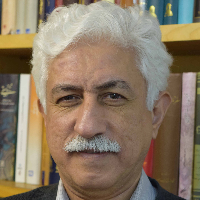Two Documents Related to the Architecture of Estarabad Village Baths
Author(s):
Abstract:
Written sources on Iranian pre-modern architecture in Islamic middle ages are very scarce. The material that is scattered in literary and historic texts is normally limited to monumental architecture, and mostly related to the architectural works and not to the process and the agents. Moreover, there is not much material on people's and vernacular architecture. However, there are surviving documents related to the Iranian's general life and social interactions which are full of architectural information. Over millennia, ordinary people have built thousands of buildings and villages. They also had to make written records for various social matters; especially when religion encouraged them to keep written records: in waqf (Islamic endowment), inheritance and trades. Waqf, inheritance and trade documens are often ignored but information-rich Iranian architecture, especially the people's architecture. Some of these documents, especially the royal and court documents are kept in governmental archives; but thousands of documents are in the possession of individuals, families and sometimes private archives. One example of these is the family documents collection of the Gorgāni (Estarabadi) families. This article is written based on two documents form the Estarabad family collection using the descriptive-analytical method. In this article we introduce two documents, going back to the end of the Qajar era, both of which are related to the construction of baths in two villages of Ganareh and Qoroq, located in Estarabad. Haj Mohammad Mehdi Kabir, one of the important merchants of the city of Estarabad, decided to build baths in two villages which probably belonged to him family in 1916. He employed builders and architects and made a contract with them. The dates of the two documents are one month and five days apart. The document texts and even their paper type are similar. From the handwritings it can be surmised that the scribe is the same for both document. The architect for the Ganareh bath is Ostad Hossein Banna and the architect for the Qoroq is Aqa Seyyed Mohammad Jafar Banna. It is remarkable that both of these architects are from Tehran. The length and remuneration terms for both the contracts are the same. Various parts and space units (compartments) of the bath as well as some of their physical features are mentioned in these documents. Some information can be also inferred with regards to the general composition of the bath spaces. The description of these spaces are nearly similar and have the same dimensions. Like most other historical texts, these documents give more information between their lines. For example, the documents do not give a description of each of the places they name. It is apparent that merely using the name of spaces such as central courtyard or platform was enough to let the patron, the architect and the witnesses know what the description is and how it should look physically. Or for example, there are no mentions of innovations by the architects. It was not the job of the architects to innovate and to use these innovations in constructing baths for fame in Estarabad, Tehran, Iran or the world. Their intention was to serve; their intention was to erect bath houses which were functional for the Qoroq and Ganareh villages to the best of their ability and meet the physical and emotional needs of the people.
Keywords:
Village architecture , patron , architect , bath , Estarabad
Language:
Persian
Published:
Athar Journal, Volume:39 Issue: 80, 2018
Pages:
81 to 88
magiran.com/p1979989
دانلود و مطالعه متن این مقاله با یکی از روشهای زیر امکان پذیر است:
اشتراک شخصی
با عضویت و پرداخت آنلاین حق اشتراک یکساله به مبلغ 1,390,000ريال میتوانید 70 عنوان مطلب دانلود کنید!
اشتراک سازمانی
به کتابخانه دانشگاه یا محل کار خود پیشنهاد کنید تا اشتراک سازمانی این پایگاه را برای دسترسی نامحدود همه کاربران به متن مطالب تهیه نمایند!
توجه!
- حق عضویت دریافتی صرف حمایت از نشریات عضو و نگهداری، تکمیل و توسعه مگیران میشود.
- پرداخت حق اشتراک و دانلود مقالات اجازه بازنشر آن در سایر رسانههای چاپی و دیجیتال را به کاربر نمیدهد.
دسترسی سراسری کاربران دانشگاه پیام نور!
اعضای هیئت علمی و دانشجویان دانشگاه پیام نور در سراسر کشور، در صورت ثبت نام با ایمیل دانشگاهی، تا پایان فروردین ماه 1403 به مقالات سایت دسترسی خواهند داشت!
In order to view content subscription is required
Personal subscription
Subscribe magiran.com for 70 € euros via PayPal and download 70 articles during a year.
Organization subscription
Please contact us to subscribe your university or library for unlimited access!



